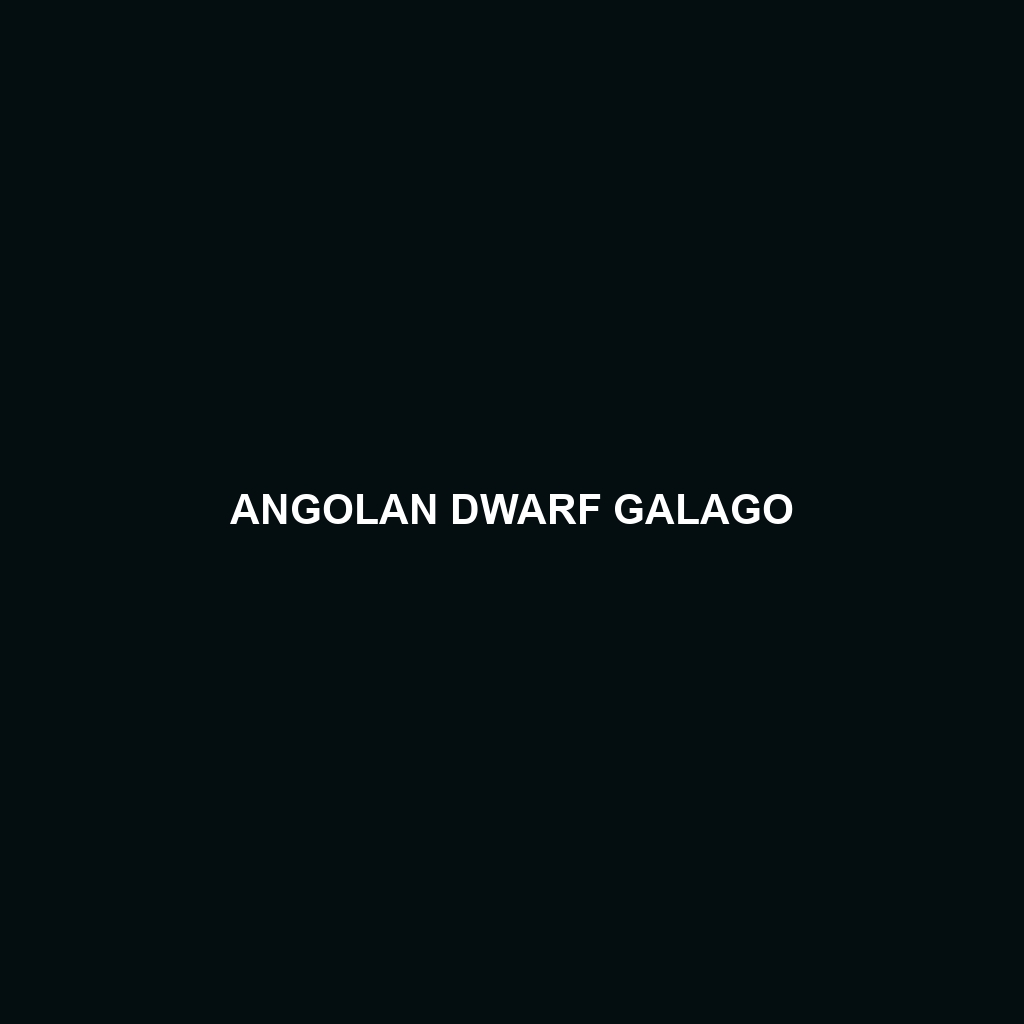Angolan Dwarf Galago
Common Name: Angolan Dwarf Galago
Scientific Name: Galagoides fumosus
Habitat
The Angolan Dwarf Galago is primarily found in the forests and woodlands of Angola, particularly in the humid, tropical regions of the country. These small primates thrive in dense, leafy environments that provide ample cover and foraging opportunities. Their range also extends into parts of Botswana, Namibia, and Zambia, showcasing their preference for tree-dominated habitats, where they can navigate the branches with agility.
Physical Characteristics
The Angolan Dwarf Galago is a small, nocturnal primate that typically measures about 14 to 23 centimeters in length, not including its long, tufted tail which can measure up to 30 centimeters. This species has a distinctively soft, greyish-brown fur with lighter underparts, and large, expressive eyes that facilitate night vision. Furthermore, its long fingers and toes are specially adapted for grasping branches and leaping between trees, making it an agile acrobat in its forest surroundings.
Behavior
Angolan Dwarf Galagos are primarily nocturnal, exhibiting high levels of activity during the night. They are known for their impressive leaping abilities, which allow them to traverse the trees in search of food and evade predators. Socially, they are often found in small family groups or pairs, using vocalizations to communicate with one another. Their playful and energetic nature makes them fascinating subjects for observation in the wild.
Diet
The diet of the Angolan Dwarf Galago primarily consists of fruits, insects, and tree gum. They possess a keen sense of smell that helps them locate their preferred food sources, especially ripe fruits and sap from trees. This dietary versatility is crucial for their survival in varying environments, as they can adapt their feeding habits based on seasonal availability.
Reproduction
Angolan Dwarf Galagos typically breed during the rainy season, which provides a rich supply of food for nursing mothers. After a gestation period of about 100 to 120 days, females usually give birth to one or two offspring. The young are born semi-altricial, meaning they require extensive care and nurturing. Mothers are known to carry their young on their backs while foraging, ensuring the safety and close proximity of the offspring.
Conservation Status
The current conservation status of the Angolan Dwarf Galago is classified as “Least Concern” by the International Union for Conservation of Nature (IUCN). However, their populations are threatened by habitat destruction due to logging and agricultural expansion. Conservation efforts are crucial to maintain their natural habitats and ensure the survival of this unique species.
Interesting Facts
1. Angolan Dwarf Galagos have an extraordinary ability to leap over distances up to 3 meters (about 10 feet).
2. They are often referred to as “bush babies” due to their vocalizations that resemble a baby’s cry.
3. Their incredible night vision allows them to spot prey in low-light conditions, making them efficient nocturnal hunters.
Role in Ecosystem
The Angolan Dwarf Galago plays a vital role in its ecosystem by acting as both predator and prey. As fruit and insect consumers, they aid in seed dispersal for various plant species, thereby contributing to forest regeneration and biodiversity. Moreover, they serve as a food source for larger predators, maintaining the balance within their ecological community.
